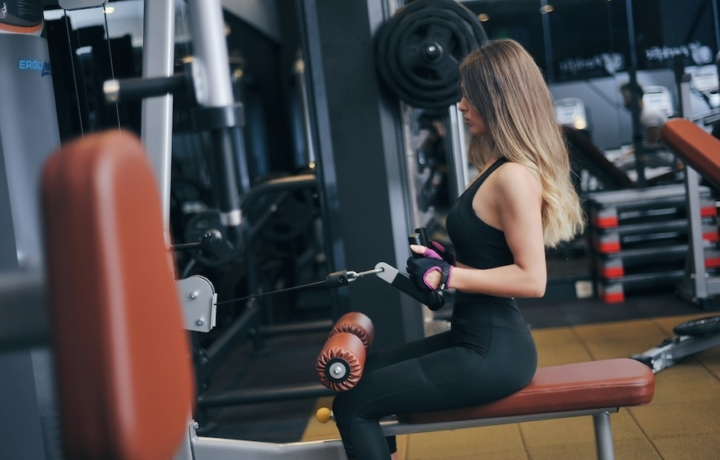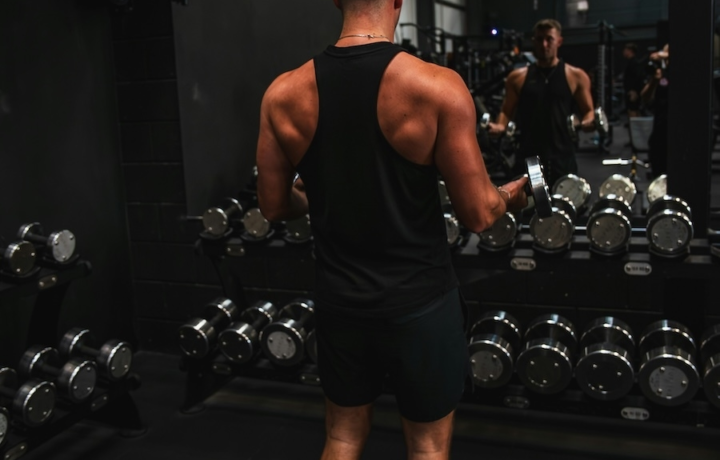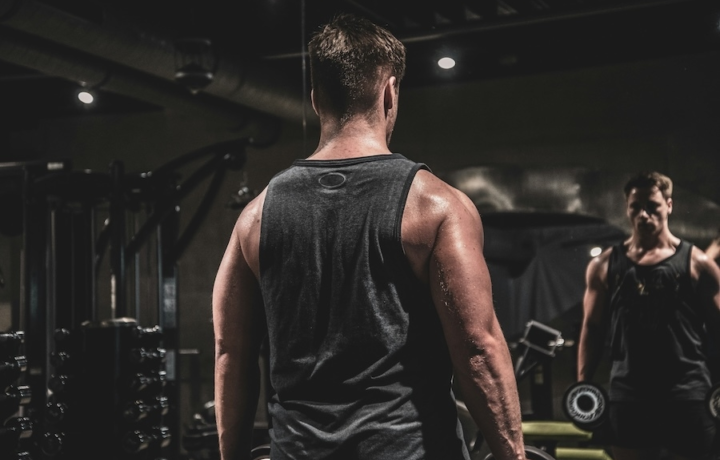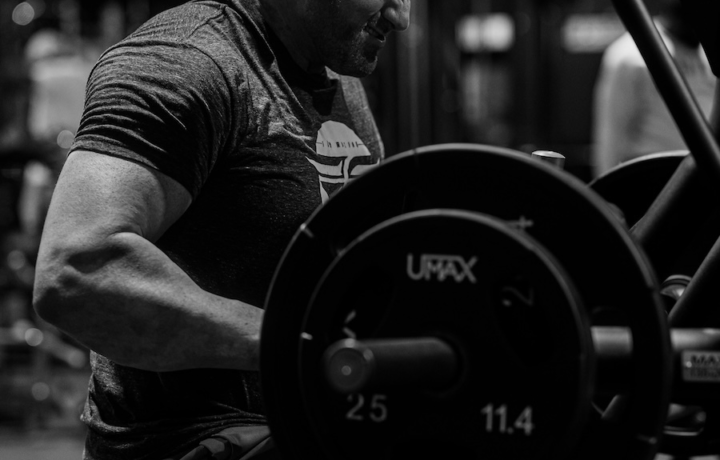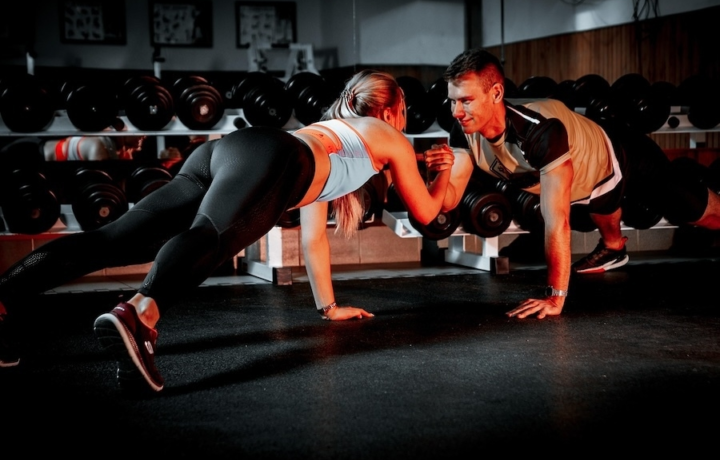Exercise
Dumbbell Hammer Curl

Dumbbell Hammer Curl
How to Perform
- Stand upright with feet shoulder-width apart, holding a dumbbell in each hand at your sides with a neutral grip (palms facing your torso).
- Maintain a straight back, slightly bent knees, and engage your core to stabilize your spine throughout the movement.
- Keeping your upper arms stationary against your sides, exhale and curl the weights upward by flexing at the elbow until the dumbbells reach shoulder height.
- Maintain a neutral grip throughout the entire movement, with thumbs pointing upward (like holding a hammer) as you curl.
- Pause briefly at the top of the movement, focusing on squeezing your biceps while maintaining proper wrist alignment.
- Inhale as you slowly lower the dumbbells back to the starting position with controlled movement, resisting gravity.
- Keep your shoulders pulled back and down throughout the exercise, avoiding the tendency to hunch forward as fatigue sets in.
- Control the tempo of each repetition, taking approximately 2 seconds to lift and 2-3 seconds to lower the weight.
Important information
- Keep your elbows fixed at your sides throughout the movement to isolate the biceps properly and prevent shoulder involvement.
- Maintain a neutral wrist position and avoid excessive flexion or extension that can lead to strain.
- Ensure you're using a weight that allows you to maintain proper form for all repetitions—if you're swinging your body to lift the weight, it's too heavy.
- Focus on the quality of each repetition rather than rushing through the set, as the time under tension is critical for muscle development.

Dumbbell Hammer Curl
Exercise Details
Primary Muscles
Muscle Groups
Mechanic
Built for progress
Take the guesswork out of training
Create personalized AI-powered workout plans that evolve with you. Train smarter, track every rep and keep moving forward, one workout at a time.






The Dumbbell Hammer Curl stands as a cornerstone bicep and forearm exercise that deserves a place in any comprehensive arm training routine. This variation of the traditional curl uniquely targets the brachialis muscle (which lies beneath the biceps) and the brachioradialis in the forearm, while still engaging the biceps brachii. By maintaining a neutral grip throughout the movement, where palms face inward toward each other rather than upward, the hammer curl creates balanced development across multiple muscle groups in the arms.
Perfect for beginners entering the world of resistance training, the hammer curl serves as an approachable yet effective exercise that requires minimal equipment and technical knowledge. This accessibility makes it an ideal starting point for those new to bodybuilding or strength training, providing immediate feedback in terms of muscle engagement and progression potential. The neutral grip position also tends to be more comfortable for those with wrist issues who might find traditional supinated curl positions uncomfortable.
For bodybuilding enthusiasts, hammer curls offer that coveted three-dimensional arm development by specifically targeting the often-neglected brachialis and forearms. When these muscles are well-developed alongside the biceps, they create that full, impressive arm appearance from all angles. The exercise particularly shines in creating that visible separation between biceps and triceps when viewed from the side.
From a strength perspective, hammer curls contribute significantly to functional arm power. The neutral grip position mimics many everyday lifting motions, translating to improved strength for activities ranging from carrying groceries to moving furniture. Additionally, stronger forearms enhance grip strength, which becomes a limiting factor in many other compound exercises like deadlifts, rows, and pull-ups.
Whether incorporated into an arm-specific training day or added to a full-body workout, the dumbbell hammer curl delivers exceptional value for its simplicity. By progressively increasing weight while maintaining proper form, even beginners can experience noticeable improvements in both arm aesthetics and functional strength capacity over relatively short time periods.
FAQ - Dumbbell Hammer Curl
Hammer curls primarily target the brachialis (under the biceps) and brachioradialis (forearm) while still engaging the biceps brachii. This neutral-grip exercise creates balanced development across multiple arm muscle groups, contributing to that coveted three-dimensional arm appearance.
Stand with feet shoulder-width apart, holding dumbbells at your sides with palms facing your torso. Keep your upper arms stationary while curling the weights upward until your thumbs are near your shoulders, then lower with control. Maintain a neutral wrist position throughout and avoid swinging your body to assist the movement.
For optimal results, perform hammer curls 1-2 times weekly with at least 48 hours between sessions targeting the same muscle groups. Most lifters see good progress doing 3-4 sets of 8-12 repetitions, adjusting the weight to ensure the last few reps of each set are challenging but doable with proper form.
The most common mistakes include swinging the torso to generate momentum, dropping the elbows forward during the curl, and rushing through the negative (lowering) portion. Also avoid gripping the dumbbells too tightly, as this can cause unnecessary forearm fatigue before your target muscles are adequately worked.
To make them easier, use lighter weights or perform seated hammer curls to reduce the temptation to use momentum. For a greater challenge, try alternating arms, adding a pause at the top of the movement, slowing down the eccentric phase, or progressing to heavier dumbbells while maintaining strict form.


